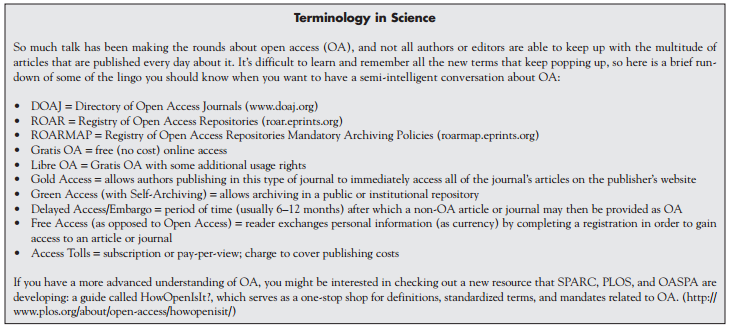“Peer review is important, but it can be different at different journals,” stated Anna Jester, director of sales and marketing at eJournal Press, to begin the session. Jester and Kirsten Patrick, editorials editor of BMJ, discussed three models of peer review: single blind, double blind, and open. In the single-blind model, the authors’ identities are known, but the reviewers’ identities are not revealed to the authors. In the doubleblind model, the authors’ and reviewers’ identities are not revealed to each other.
Jester addressed some of the issues surrounding the practice of keeping identities confidential when files are sent as attachments—specifically how to find and remove additional information in a PDF or Microsoft Word document that might reveal the identity of its author. She recommended using a decision letter and adding the reviewer comments at the end of the letter rather than sending the reviewer comments as an attachment or sending the manuscript file with tracked changes that were incorporated by the reviewers. She provided an example of a decision-letter template in eJournal Press’s manuscripttracking system containing the reviewer comments following the body of the letter. She also presented examples of an electronic conflict-of-interest disclosure form for reviewers and mentioned that some journals send reviewer comments through their production departments as metadata.
Patrick shared some opinions regarding the pitfalls of the peer-review process and provided some suggestions for improving and maintaining the quality of reviews, such as scoring the reviews and giving reviewers rewards for high-quality reviews, for example, through CME credit; providing the comments of the other reviewers; training reviewers and giving them guidance; and using an open review process, in which the identities of the reviewers and the authors are known to each other, to increase the accountability of the comments (as BMJ does).
Patrick shared results of studies that compared the quality of open and blinded reviews, mentioning that one main finding of several randomized controlled trials was that recommendation decisions were similar in both systems. One study also found that reviewers could identify authors in double-blind reviews in 24–50% of cases. Kirsten discussed the BMJ open process of publishing original submitted manuscripts and reviewer comments online to supplement revised accepted manuscripts and noted that BMJ enables fast online postpublication open review—that is, with the identities of the postpublication reviewers—of BMJ-published manuscripts through Rapid Response, BMJ’s online correspondence.

